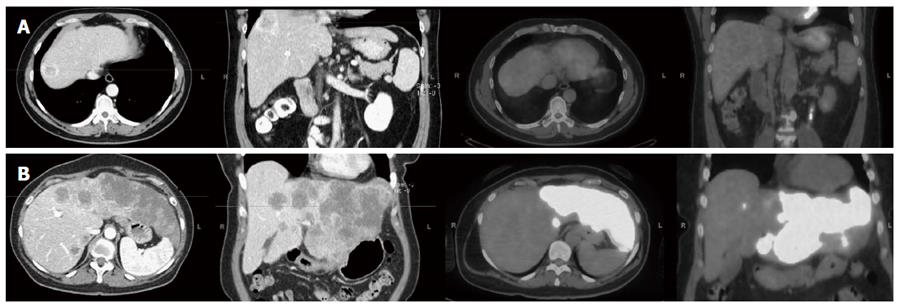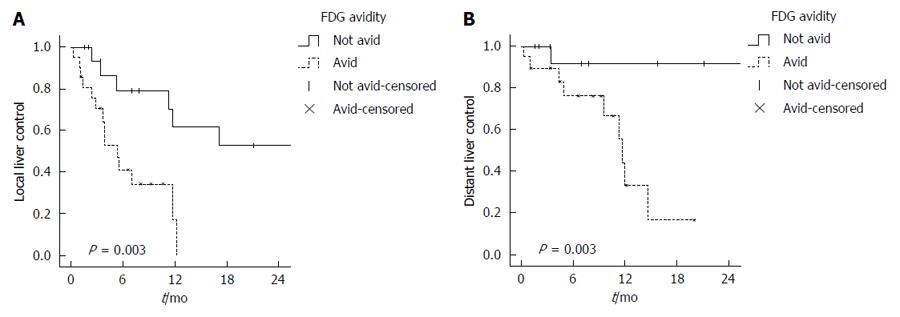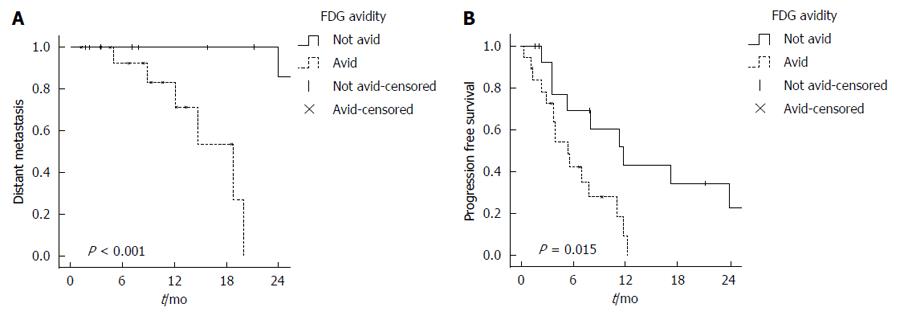Copyright
©The Author(s) 2016.
World J Gastroenterol. Dec 21, 2016; 22(47): 10406-10414
Published online Dec 21, 2016. doi: 10.3748/wjg.v22.i47.10406
Published online Dec 21, 2016. doi: 10.3748/wjg.v22.i47.10406
Figure 1 Two patients with different fluorodeoxyglucose avidity.
A: 49-year-old male patient with multicentric hepatocellular carcinoma and a dominant lesion in the dome of the liver as evident on axial and sagittal views from an arterial phase computed tomography (CT) scan of the abdomen, and was not fluorodeoxyglucose (FDG)-avid on the corresponding positron emission tomography (PET)/CT scan. The patient had a history of rectal cancer and the PET/CT scan was to evaluate newly diagnosed liver lesions; B: 58-year-old male patient with history of diverticulosis, CT scan showed extensive involvement of the left lobe and the corresponding PET/CT scan showed FDG-avid disease with SUVmax of 20.
Figure 2 Kaplan Meier curves for (A) local and (B) distant liver control.
Figure 3 Kaplan Meier curves for (A) freedom from distant metastases and (B) progression free survival.
- Citation: Abuodeh Y, Naghavi AO, Ahmed KA, Venkat PS, Kim Y, Kis B, Choi J, Biebel B, Sweeney J, Anaya DA, Kim R, Malafa M, Frakes JM, Hoffe SE, El-Haddad G. Prognostic value of pre-treatment F-18-FDG PET-CT in patients with hepatocellular carcinoma undergoing radioembolization. World J Gastroenterol 2016; 22(47): 10406-10414
- URL: https://www.wjgnet.com/1007-9327/full/v22/i47/10406.htm
- DOI: https://dx.doi.org/10.3748/wjg.v22.i47.10406















